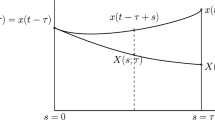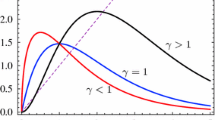Abstract.
The effect of overcompensatory recruitment and the combined effect of overcompensatory recruitment and generation delay in discrete nonlinear age-structured population models is studied. Considering overcompensatory recruitment alone, we present formal proofs of the supercritical nature of bifurcations (both flip and Hopf) as well as an extensive analysis of dynamics in unstable parameter regions. One important finding here is that in case of small and moderate year to year survival probabilities there are large regions in parameter space where the qualitative behaviour found in a general n+1 dimensional model is retained already in a one-dimensional model. Another result is that the dynamics at or near the boundary of parameter space may be very complicated. Generally, generation delay is found to act as a destabilizing effect but its effect on dynamics is by no means unique. The most profound effect occurs in the n-generation delay cases. In these cases there is no stable equilibrium X * at all, but whenever X * small, a stable cycle of period n+1 where the periodic points in the cycle are on a very special form. In other cases generation delay does not alter the dynamics in any substantial way.
Similar content being viewed by others
Author information
Authors and Affiliations
Additional information
Received 25 April 1995; received in revised form 21 November 1995
Rights and permissions
About this article
Cite this article
Wikan, A., Mjølhus, E. Overcompensatory recruitment and generation delay in discrete age-structured population models. J Math Biol 35, 195–239 (1996). https://doi.org/10.1007/s002850050050
Issue Date:
DOI: https://doi.org/10.1007/s002850050050




